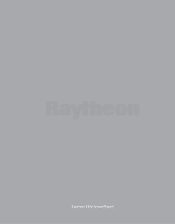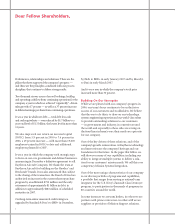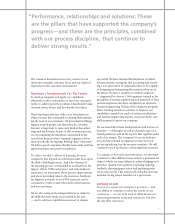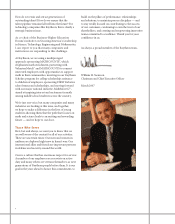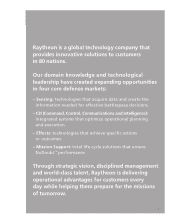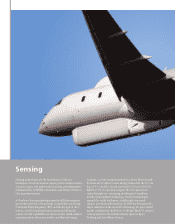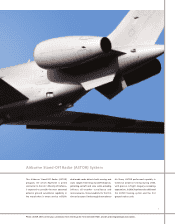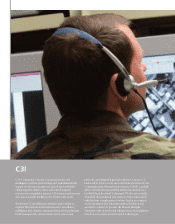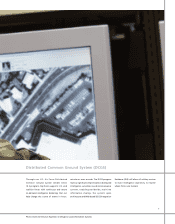Raytheon 2006 Annual Report Download - page 8
Download and view the complete annual report
Please find page 8 of the 2006 Raytheon annual report below. You can navigate through the pages in the report by either clicking on the pages listed below, or by using the keyword search tool below to find specific information within the annual report.
Sensing
Sensing technologies are the foundation of effective
battlespace decisions. Sensors acquire precise situational data
across air, space and underwater domains, providing timely
information for battlefi eld commanders and defense systems to
take appropriate action.
At Raytheon, Sensing technologies span the full electromagnetic
spectrum to provide a broad range of capabilities, including
traditional Radio Frequency (RF) and Electro-optical (EO)
sensors, as well as hyperspectral, acoustic and ultraviolet
sensors. Our RF capabilities are used in radars, missile seekers,
communications, electronic warfare and directed-energy
weapons. Current examples include our Active Electronically
Scanned Array (AESA) radars being produced for the U.S. Air
Force’s F-15 and B-2 aircraft and for the U.S. Navy’s F/A-18
fi ghter jet. We are also preparing for the next-generation
radar through our continuing development of gallium
nitride semiconductor technology. Our EO technologies
expand the visible battlespace, enable night vision and
support precision strike missions. In 2006 Raytheon passed a
major milestone in the use of EO technology for space-based
missile tracking with the delivery of the fi rst Block VI infrared
sensor payload for the Missile Defense Agency’s Space
Tracking and Surveillance System.

